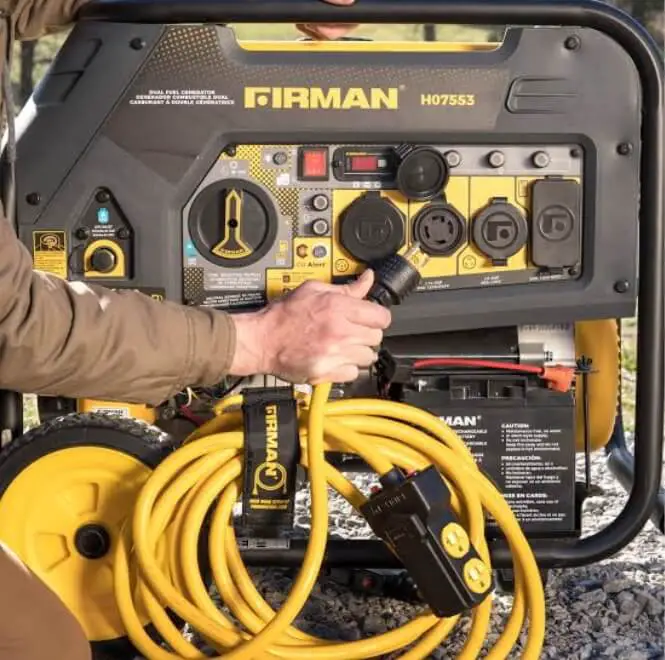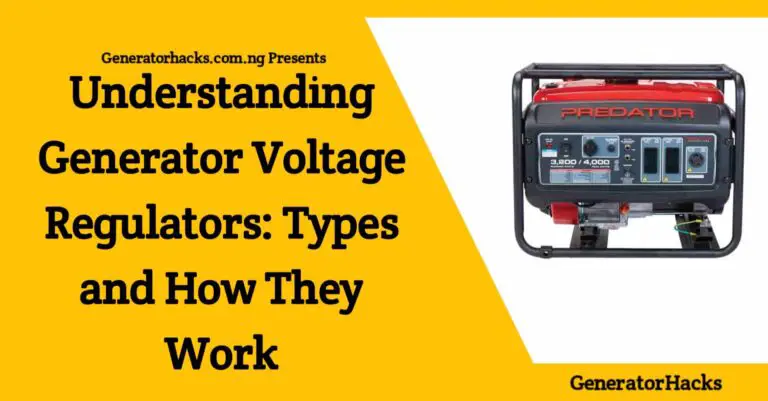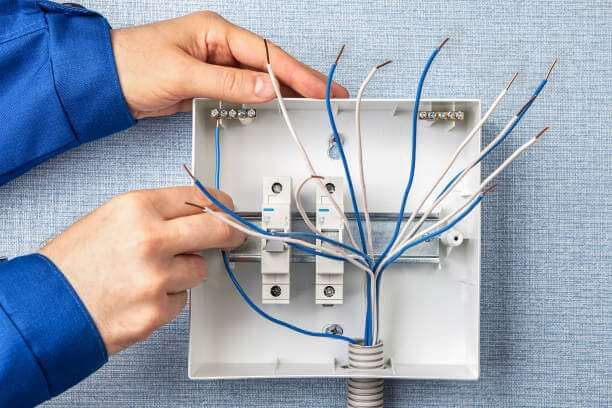As an Amazon Associate, we earn from qualifying purchases. This does not affect the price you pay or the quality of the products you buy. For more information, please read the full affiliate disclosure here.
Generators are prone to faults, and one of the most common problems that occur with them is a failure in their Automatic Voltage Regulator (AVR).
AVR is an electronic device that controls the output voltage of the generator, ensuring that it remains stable and within acceptable limits.
But when the AVR fails, the output voltage of the generator can become unstable, causing damage to any connected equipment and potentially leading to a complete shutdown of the generator.
In this article, we will discuss how to bypass the generator AVR and continue to use the generator in case of an AVR failure. But most importantly, you should know this process is not recommended.
What is a Generator AVR?
An Automatic Voltage Regulator (AVR) in generators is an electronic device that regulates the output voltage of a generator by controlling the excitation current of the alternator.
The AVR is responsible for ensuring that the output voltage of the generator remains stable, even under varying loads and environmental conditions.
The AVR achieves this by monitoring the output voltage of the generator and adjusting the excitation current of the alternator accordingly.
If the output voltage is too high, the AVR reduces the excitation current, and if the output voltage is too low, the AVR increases the excitation current.
And if there’s any damage, the AVR will be the one to first get damage, either it blows up or stops working.
To understand how AVR works read:- Understanding Generator Voltage Regulators: Types and How They Work
Why Bypass the AVR?
In most cases, as I said earlier, it is not advisable to bypass the AVR as it’s an important safety feature that ensures that the output voltage of the generator remains stable and within acceptable limits.
However, in some cases, it may be necessary to bypass the AVR to continue using the generator in the event of an AVR failure.
AVR failure can occur due to various reasons, including overloading, voltage spikes, and other electrical faults.
When the AVR fails, the output voltage of the generator can become unstable, causing damage to any connected equipment and potentially leading to a complete shutdown of the generator.
In such cases, bypassing the AVR can be a temporary solution to keep the generator running until the AVR is repaired or replaced.
How to Bypass Generator AVR
Bypassing the AVR is not a recommended solution and should only be done in emergencies where no other options are available.
The following steps outline the procedure to bypass the AVR:
Step 1: Turn off the generator
Before attempting to bypass the AVR, it is essential to turn off the generator to ensure that no electrical current is flowing through the system. This will help prevent any electrical shocks or accidents during the bypassing process.
Step 2: Locate the AVR
The AVR is typically located near the alternator, the generator’s control panel, or the generator head and can be identified by its distinctive appearance and wiring connections.
Step 3: Disconnect the AVR
In this case, you will need a screwdriver or pliers. The AVR is responsible for regulating the voltage output of the generator, but we will temporarily disconnect it for this demonstration.
Take your screwdriver or pliers and carefully disconnect the wiring connections from the AVR.
It is important to exercise caution during this process to avoid any damage to the wiring or connectors.
Ensure that you handle the connections gently and avoid applying excessive force.
Step 4: Connect the generator directly to the load
Now that the AVR has been disconnected, we can proceed to connect the generator directly to the load.
This step allows the generator to supply power directly to the load without the regulation provided by the AVR.
You can do this by using an extension cord or a power strip. However, you should ensure that the cord or the strip can handle the power output from the generator.
You can also use appropriate wiring and connectors, establishing a direct connection between the generator and the load.
This will involve connecting the output terminals of the generator to the input terminals of the load.
Make sure to choose the correct gauge of wire suitable for the power requirements of your load.
Additionally, use connectors that are compatible with the generator and load terminals to ensure a secure and reliable connection.
Step 5: Turn on the generator
After connecting the generator directly to the load, turn on the generator and monitor the output voltage to ensure that it remains stable and within acceptable limits.
If the output voltage is unstable or too high, it may be necessary to adjust the load or the generator’s engine speed to ensure that the output voltage remains stable.
Step 6: Repair or replace the AVR
Bypassing the AVR is only a temporary solution, and you must repair or replace the AVR as soon as possible.
A faulty AVR can cause damage to connected equipment and pose a significant safety hazard. But it will cause more damage when you bypass it.
This video can help if you’d want to replace the AVR…
Precautions to Take When Bypassing the AVR
While bypassing the AVR may be necessary in emergencies, it is important to exercise caution and take the following precautions:
Safety first: Always prioritize your safety and the safety of others. Ensure that the generator is turned off before attempting to bypass the AVR. Use insulated gloves and tools to handle electrical connections and avoid working in wet conditions.
Understand the risks: Bypassing the AVR can result in unstable voltage output, which can damage sensitive equipment or appliances. Be aware of the potential risks and only bypass the AVR if there are no other alternatives and if you have a good understanding of the electrical system.
Seek professional assistance: If possible, it is recommended to consult a professional electrician or generator technician to bypass the AVR. They have the knowledge and experience to safely handle electrical systems and can guide the best course of action.
Document the process: If you decide to bypass the AVR yourself, document each step of the process carefully. Take clear photographs or make notes of the wiring connections and ensure that you can reverse the process once the AVR is repaired or replaced.
Monitor the output voltage: Once the generator is running with the AVR bypassed, closely monitor the output voltage. Use a voltmeter or a reliable voltage monitoring device to ensure that the voltage remains stable and within acceptable limits. If you notice any irregularities or excessive voltage fluctuations, immediately shut down the generator and reassess the situation.
Final Thought
Bypassing the Automatic Voltage Regulator (AVR) in a generator is not a recommended solution and should only be considered in emergencies when no other options are available.
The AVR plays a crucial role in maintaining a stable output voltage, and bypassing it can lead to potential risks and damage to connected equipment.
If you find yourself in a situation where the AVR has failed, it is important to prioritize safety and seek professional assistance if possible.
A qualified electrician or generator technician can assess the issue and provide appropriate solutions to repair or replace the AVR.
Remember, bypassing the AVR should only be a temporary measure until the AVR is repaired or replaced.









